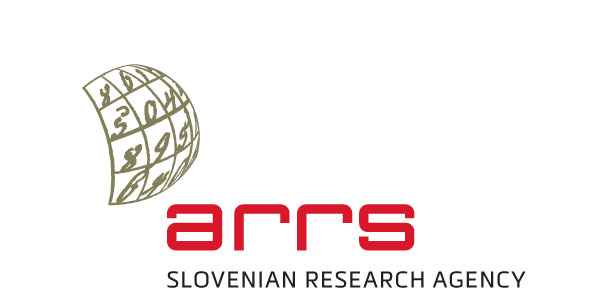Oprema v laboratoriju
Erosion in Coastal Seas and Navigable Rivers
Research organization:
National Institute of Biology
Participating research organization:
University of Ljubljana, Faculty of Civil and Geodetic Engineering
ARRS classification
2.20.00 - Engineering sciences and technologies - Hydrology
CERIF classification
T220 - TECHNOLOGICAL SCIENCES - Civil engineering, hydraulic engineering, offshore technology, soil mechanics
Project leader: prof. Vlado Malačič, PhD (NIB)
Partners: Boris Petelin, PhD (NIB),
Branko Čermelj, PhD (NIB),
Tihomir Makovec (NIB),
Milijan Šiško (NIB),
prof. Vlado Malačič, PhD (NIB),
prof. Matjaž Četina, PhD (UL FGG),
prof. Dušan Žagar, PhD (UL FGG),
Gorazd Novak, PhD (UL FGG)
Code: J2-9444 - Erosion in Coastal Seas and Navigable Rivers
Duration: 01.09.2018 - 31.08.2022
The authors acknowledge the basic project J2-9444 was financially supported by the Slovenian Research Agency.
Abstract
The project studied the impact of cargo ships during their passage through the shallow Bay of Koper. The state-of-the-art oceanographic high-frequency equipment placed on the seabed is suitable for observing pulses of increased turbulence and mean velocities with a duration of one minute. With the 8 Hz data recording frequency, the peaks of increased turbulence and mean velocities of 10 seconds in the water column can be clearly observed when the ships pass by the equipment at a distance of smaller than 100 m, and when their draft and speed are "sufficient". In numerical simulations of the hydrodynamics around the ship's propeller, we found that in the composition of the tangential bottom stress the tangential and radial velocity components of a jet impinging on the seafloor are also important, besides the dominated axial velocity component. This is a new discovery that will be published in the near future. With quite different numerical simulations of the dynamics of water masses in the shallow, wide-open Bay of Koper, which allows integration of results of the hydrodynamics of a ship into the dynamics of a bay, another byproduct of a circulation model surprised us. This one is related to the formation of the 35 m deep pit (underwater 'Triglav') near Cape Madona of Piran, the deepest part of the Gulf of Trieste. Model simulations show that the main reason for the pit is related to natural erosion by the currents (and waves) that passed by the cape during the Bora wind episodes during the last 10,000 years of sea level rise. The increased currents during this wind caused significant erosion of the seabed near the cape, which is composed of limestone, mainly due to its shape, which funnels currents nearby, lifting bottom sediments and depositing them in the surrounding areas.
Relevance to the development of science
The project showed that the width of erosion by the cargo ships is certainly not wider than 100 m, rather narrower than 50 m. The results of CFD simulacij of fluid flow around a propeller show that the area near the propeller (at a distance of up to three diameters of a propeller is under the influence of the dominant axial velocity component of the jet, but the contributions of radial and tangential components are also important. All three components increase the bottom stress, which can lead to erosion of the seabed.
We have identified the hotspot areas that are under the influence of ship and wind waves. These are mainly the areas close to the coast, especially zones protruding into the sea, e.g. the headlands and large peers, such as the headland Madona and Ronek, the peer 'Petelin' in Izola, the area between Izola and Koper (the area of the shipwreck Rex). At the same time, a by-product of the model was the cause of the formation of the 35 m deep pit, the deepest part of the Gulf of Trieste. Its formation is related to the shape of the stony littoral of the Madona promontory and the erosion caused by currents and waves during the bora near it in the last 10,000 years, when the formation of the Gulf of Trieste took place with the rise of the sea level after the last ice age.
Relevance to Slovenia's development
The project results will be a tool for regulating maritime traffic in the Bay of Koper (maximum speed of ships depending on draft and dimensions of ships). The Bay of Koper is a neuralgic area for Slovenia, where there are protected sea areas that will increase. AT At the same time, the port of Koper is planning a significant increase in maritime traffic, and there are also efforts by the municipalities to increase tourist capacity and utilize nautical tourism. For this reason, there must be careful spatial planning of activities with their limitations, so that, for example, erosion of the seabed does not lead to siltation of protected sea meadows and the ecological status of the sea remains at the current level. Similarly, coastal hot-spot areas are vulnerable to erosion due to currents and waves, as demzonstrated by numerical simulations.
Here we give one of the findings that the signal on the seabed in the passage of the vessel is essentially due to the travel of a solitary nonlinear wave. The lecture given by dr. Vlado Malačič in 1997 at the International Center of Theoretical Physics (ICTP) in Trieste can be found here - a scan of the original lecture and a renewal of original.
Researchers - link to database SICRIS.
Information about the project - link to database SICRIS.

 NIB - MORSKA BIOLOŠKA POSTAJA PIRAN
NIB - MORSKA BIOLOŠKA POSTAJA PIRAN

